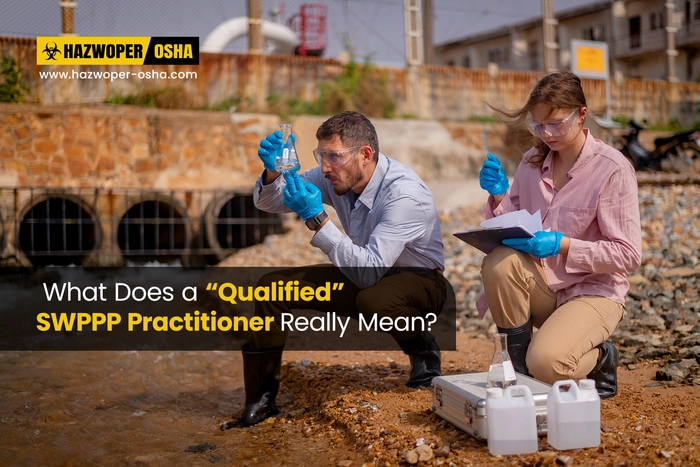Protecting Workers from Heat Stress

What is Heat Stress?
You would have heard people discussing ‘heat stress’ now that summer is here. But what exactly is heat stress and why do people keep on talking about it?
Let me first explain what heat stress is. Heat stress refers to the condition where the human body absorbs the heat from a hot environment, collects it to excessive levels, and then cannot get rid of the excess heat. When this occurs, the core body temperature and the heart rate drastically increase resulting in the person feeling extremely hot and losing focus on what he/she is doing. As the heat stress levels increase, the person can become irritable, lose the desire to drink, feels very tired, and becomes ill. If nothing is done to cool the body, and the person continues to suffer from heat stress then he/she may faint or even die.
This shows that heat stress is a very critical condition for a person to suffer from. Often, it is people involved in heavy labor, who work under the hot sun, or those who work in hot temperatures that suffer from heat stress. Construction workers are commonly exposed to heat stress, especially when working in hot climates and during summers.
What Factors Contribute to Heat Stress?
Several factors contribute to heat stress, these include high air temperatures, high levels of humidity, direct exposure to the sun when working in open-to-sky works places, direct exposure to heat sources such as working in proximity to open fires, exposure to hot workplaces, workspaces with no ventilation or breeze, physical contact with hot objects, and arduous physical activities. Furthermore, workers who do jobs that require them to wear heavy clothing, waterproof clothes, and even personal protective clothing such as hazmat suits may succumb to heat illnesses.
Who is Prone to Experience Heat Stress?
Anyone can experience heat stress and related heat illnesses. However, according to the CDC, workers who are overweight, over the age of 65 years, diagnosed with high blood pressure or heart disease, or take prescription drugs that may have a negative impact from extreme heat are those at greater risk. In addition, workers undertaking the following work tasks such as welding, soldering, mining, farming, and firefighting; and those employed in construction work, working in confined spaces, and heat-generating manufacturing operations are also at greater risk.
These workers must, therefore, be trained and given an adequate understanding of the dangers of heat stress and related heat illnesses as well as the causes and how to minimize their exposure. In case of contracting heat stress, workers must also be given training and guidance on immediate measures to offset heat stress and first aid that must be administered. HAZWOPER workers are given special training on managing exposure to heat stress and this is included as part of the initial OSHA HAZWOPER 40 Hour Training given to them.
Types of Heat-Related Illnesses
Let’s now briefly touch on the types of illnesses caused by heat stress.
Heat Stroke
This is the most serious of all the illnesses that be contracted due to heat stress. When the body temperature rises rapidly and is unable to cool down then heatstroke can occur. As the body temperature can rise to 106 °F or higher within 10 to 15 minutes, heatstroke can have highly adverse effects on worker’s health resulting in permanent disability or, in the worst-case scenario, death.
Heat Exhaustion
This is another type of illness, although it has less severe symptoms and consequences to good health. Heat exhaustion occurs when the human body is subject to an excessive loss of salt and water. This usually happens when a person sweats excessively and does not replace the lost fluids. While older workers and those with high blood pressure are at greater risk, any workers working in hot and humid temperatures may suffer from this illness. Construction workers are a good example.
Rhabdomyolysis
This is a serious medical condition linked to heat stress when workers are exposed to extended periods of physical labor. Rhabdomyolysis (also known as Rhabdo) occurs when electrolytes and proteins from damaged muscles are released into the bloodstream causing kidney and heart damage leading to other serious illnesses, permanent disability, and sometimes death.
Sudden Fainting Spells and Dizziness
Excessive exposure to heat can result in workers experiencing dizziness or fainting spells while they are standing for long periods or suddenly stand up. This can occur due to not having adjusted to the high temperatures, excessive heat in the work area, or dehydration. Often referred to as Heat Syncope it is a less serious form of heat illness and occurs when the blood flow to the brain is temporarily reduced due to exposure to very high temperatures.
Heat Cramps
Perspiration is a very common occurrence when working in hot conditions. So, workers in occupations ranging from construction to roadworks and those working in factories and small spaces in office complexes can suffer from excessive sweating. Such workers would be at risk to heat cramps as they would have lost a loss of water and salt due to sweating resulting in their muscles cramping because of the fall in sodium level in the body. Point to note, heat cramps are also a symptom of heat exhaustion.
Heat Rash
Another mild and curable, although very irritating sickness from heat stress is the forming of rashes on the skin, especially in areas such as the inner side of the elbow or behind the knees. Rashes are developed due to sweating and humid climate conditions resulting in blocked sweat ducts trapping the perspiration under the skin.
For more details on symptoms and first-aid measures, check out the NIOSH website on heat-related illnesses.
How Should Employers Protect Workers from Heat Stress?
To safeguard employees from heat stress, employers should have in place a comprehensive and effective heat illness prevention program. In addition, training workers on the hazard related to heat stress and the related repercussions of heat illnesses should be given. This is especially critical when workers work in hot weather, are expected to work directly under the sun, or in workspaces that are hot and humid. Employers should also ensure that workers:
- are given adequate rest periods,
- are provided with sheltered and/or cool resting places,
- have easy access to cool drinking water,
- are given rotating work schedules or have modified working hours with adequate breaks for rest and drinking water,
- are encouraged to self-monitor against heat stress or have a system where workers keep tabs on colleagues, and
- are given use of protective clothing that provides cooling.
It is also important to have a supervisor or a designated health and safety manager periodically monitoring workers' health and exposure levels to heat, as well as work conditions.
In cases where workers are unused to the heat, they must be given time to acclimatize themselves before undertaking the full workload. In such instances, employers can gradually increase workloads and also provide these workers with more frequent and longer rest periods.
And finally, assign a supervisor or a health and safety officer (basically a person with authority and responsibility) to check on workers’ health and exposure to the heat as well as monitor the conditions of work at the construction or other worksite.
How Should Workers Protect Themselves?
As important as it is for employers to offer adequate protection against heat stress, workers must also make sure to take care of themselves. So, employees must adhere to the following.
- Comprehend the signs and symptoms of heat stress.
- Ensure drinking enough water. Drinking water every 15 minutes and before you are thirsty is the expert’s recommendation. Monitor this with an alarm if it makes it easier!
- Try to work under a shade and avoid working directly under the sun.
- Monitor yourself and also keep an eye on your co-worker.
- Caffeinated drinks should be avoided, as should alcoholic beverages.
- Wear clothing that is loose-fitting, light-colored, and lightweight. If you must wear personal protective clothing, take breaks in a cool area, and ask your employer for types that are conducive to be used in hot conditions.
References:
Office Research Units, University of Iowa. (n.d.). Heat stress. Website. https://ehs.research.uiowa.edu/occupational/heat-stress
OSHA. (2017). Protecting workers from heat stress. OSHA Quick Card.

 EN |
EN |  ES
ES
































































































































